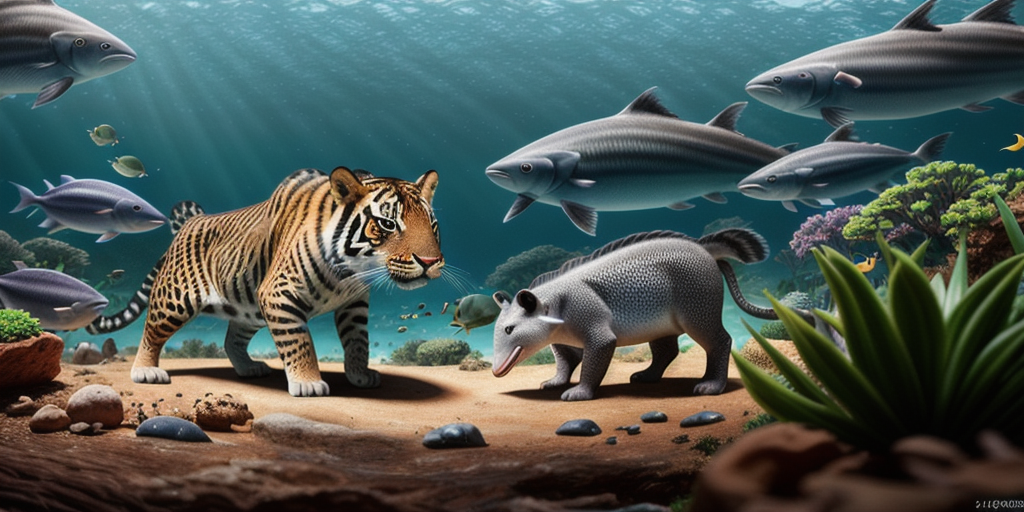
How environmental plasticity sparks the rise of new species across the animal kingdom
How did your country report this? Share your view in the comments.
Introduction:
The news topic “How environmental plasticity sparks the rise of new species across the animal kingdom” has drawn international attention, with various media outlets providing diverse insights, historical context, political stances, and on-the-ground developments. Below is a curated overview of how different countries and media organizations have covered this topic recently.
Quick Summary:
- Researchers at the University of Bergen in Norway. found a larval ctenophore in a tank where a mature comb jellyfish was supposed to be. The unintended finding begs the question of just how many more animals can age in reverse. Previous research suggests that the comb Jellyfish may have been the first animal species to appear on Earth 700 million years ago, and may indeed owe its longevity to their ability to reverse growth and development.“Witnessing how they slowly transition to a typical cydippid larva as if they were going back in time, was simply fascinating,” said study co-author Joan J. Soto-Angel. “This is a very exciting time for us,’ said Paul Burkhardt, who co-wrote the study. ‘It raises fascinating questions about how spread this capacity is across the animal tree of life.’
- The Intergovernmental Panel on Climate Change estimates that 20 to 30 percent of assessed plants and animals could be at risk of extinction if average global temperatures reach the projected levels by 2100. Evolution would have to occur 10,000 times faster than it typically does in order for most species to adapt and avoid extinction. The changing climate with its more extreme weather is already affecting many plant and animal species and disrupting ecosystem functioning. The decade from 2001 to 2010 was the warmest on record since measurements began. The National Wildlife Federation reports that 177 of 305 North American bird species shifted their range further north by 35 miles in the last 40 years; and over the last century, 14 s miles over the past decade. A 2011 study found that in response to warming temperatures, species are moving to higher elevations at an average rate of 36 feet per decade and to higher latitudes approximately 10 miles per decade.
Country-by-Country Breakdown:
‘Time-traveler’ jellyfish found to age backward in accidental discovery
Researchers at the University of Bergen in Norway. found a larval ctenophore in a tank where a mature comb jellyfish was supposed to be. The unintended finding begs the question of just how many more animals can age in reverse. Previous research suggests that the comb Jellyfish may have been the first animal species to appear on Earth 700 million years ago, and may indeed owe its longevity to their ability to reverse growth and development.“Witnessing how they slowly transition to a typical cydippid larva as if they were going back in time, was simply fascinating,” said study co-author Joan J. Soto-Angel. “This is a very exciting time for us,’ said Paul Burkhardt, who co-wrote the study. ‘It raises fascinating questions about how spread this capacity is across the animal tree of life.’ Read full article
Climate Change Poses Challenges to Plants and Animals
The Intergovernmental Panel on Climate Change estimates that 20 to 30 percent of assessed plants and animals could be at risk of extinction if average global temperatures reach the projected levels by 2100. Evolution would have to occur 10,000 times faster than it typically does in order for most species to adapt and avoid extinction. The changing climate with its more extreme weather is already affecting many plant and animal species and disrupting ecosystem functioning. The decade from 2001 to 2010 was the warmest on record since measurements began. The National Wildlife Federation reports that 177 of 305 North American bird species shifted their range further north by 35 miles in the last 40 years; and over the last century, 14 s miles over the past decade. A 2011 study found that in response to warming temperatures, species are moving to higher elevations at an average rate of 36 feet per decade and to higher latitudes approximately 10 miles per decade. Read full article
Global Perspectives Summary:
Global media portray this story through varied cultural, economic, and political filters. While some focus on geopolitical ramifications, others highlight local impacts and human stories. Some nations frame the story around diplomatic tensions and international relations, while others examine domestic implications, public sentiment, or humanitarian concerns. This diversity of coverage reflects how national perspectives, media freedom, and journalistic priorities influence what the public learns about global events.
How did your country report this? Share your view in the comments.
Sources:
- ‘Time-traveler’ jellyfish found to age backward in accidental discovery
- Climate Change Poses Challenges to Plants and Animals
Source: https://phys.org/news/2025-05-environmental-plasticity-species-animal-kingdom.html

